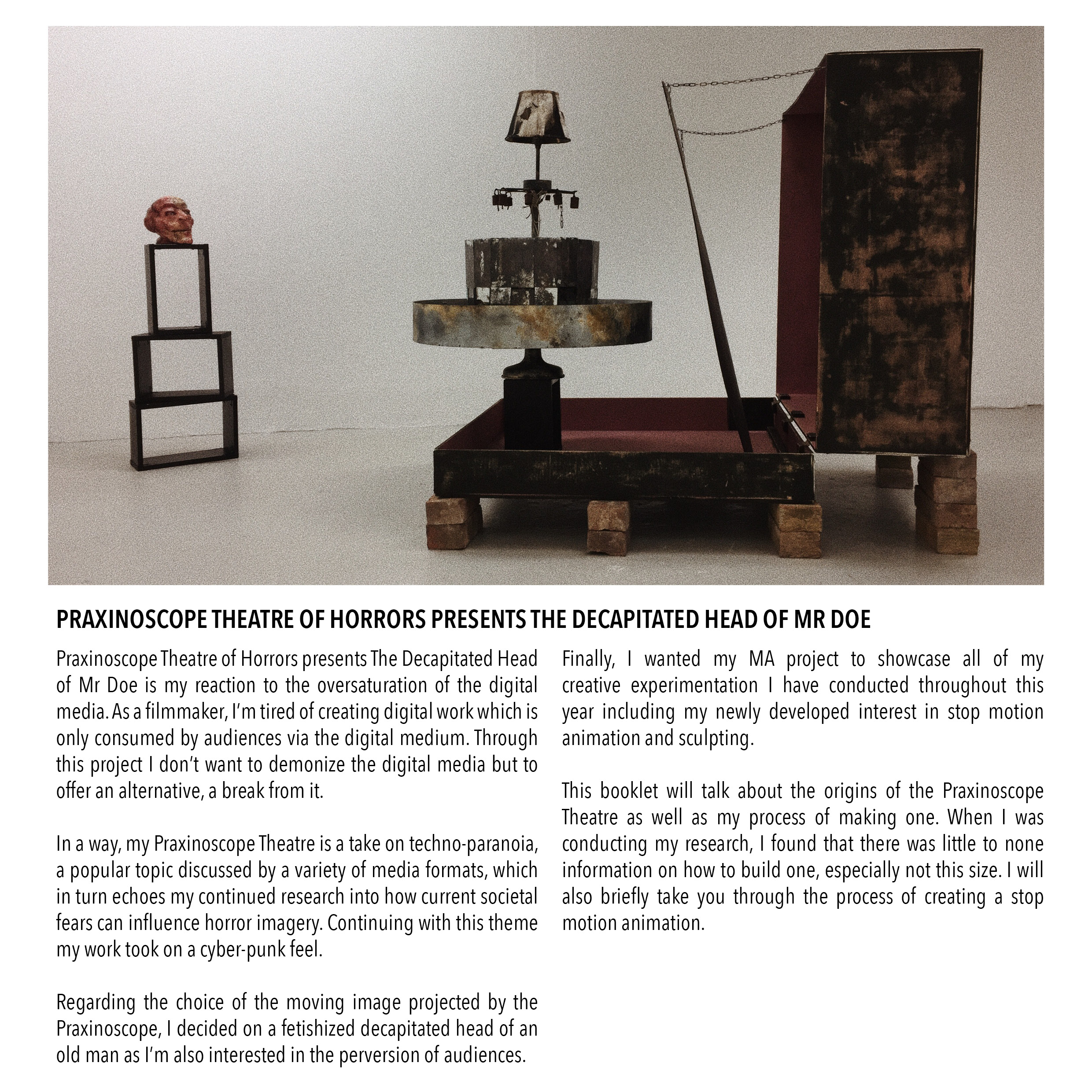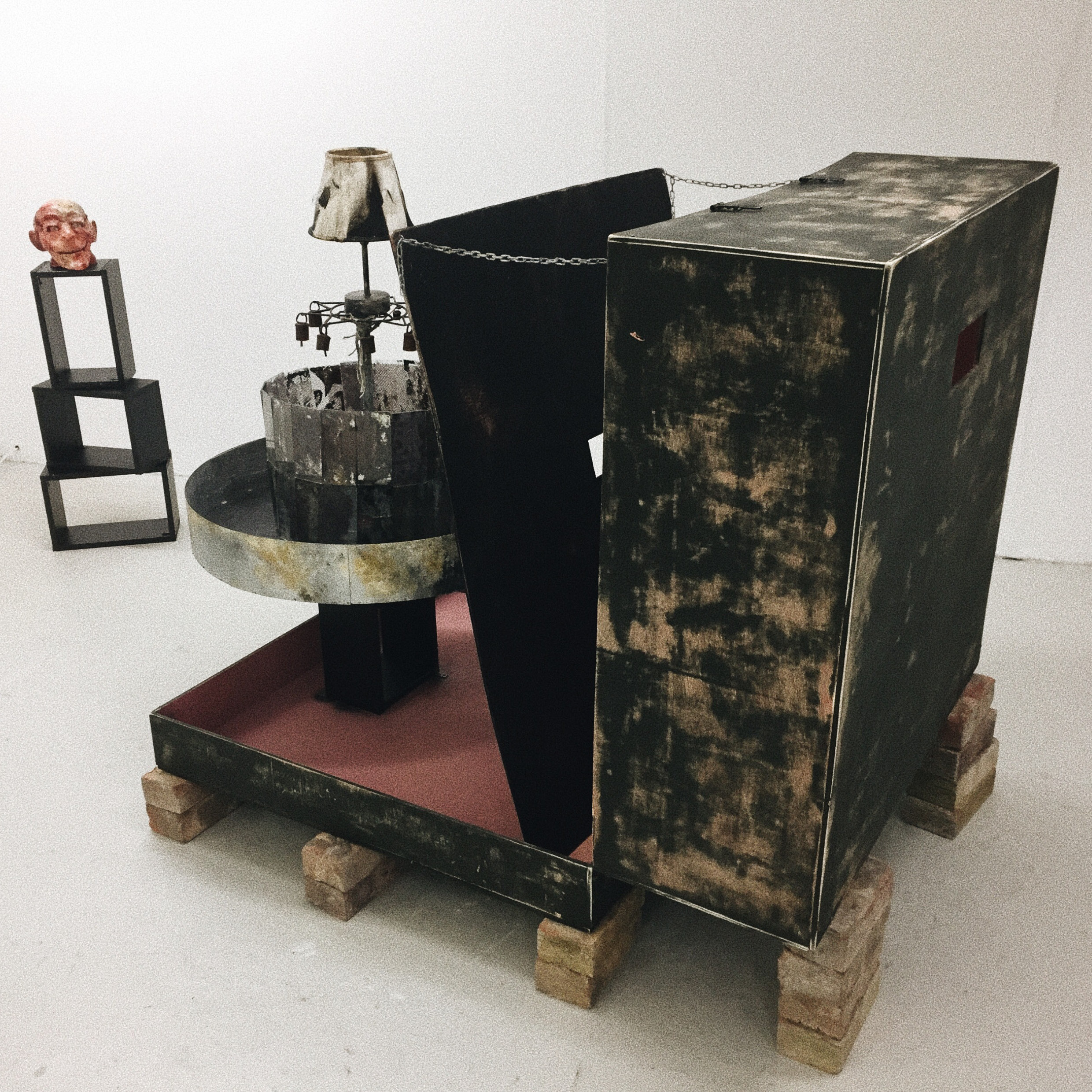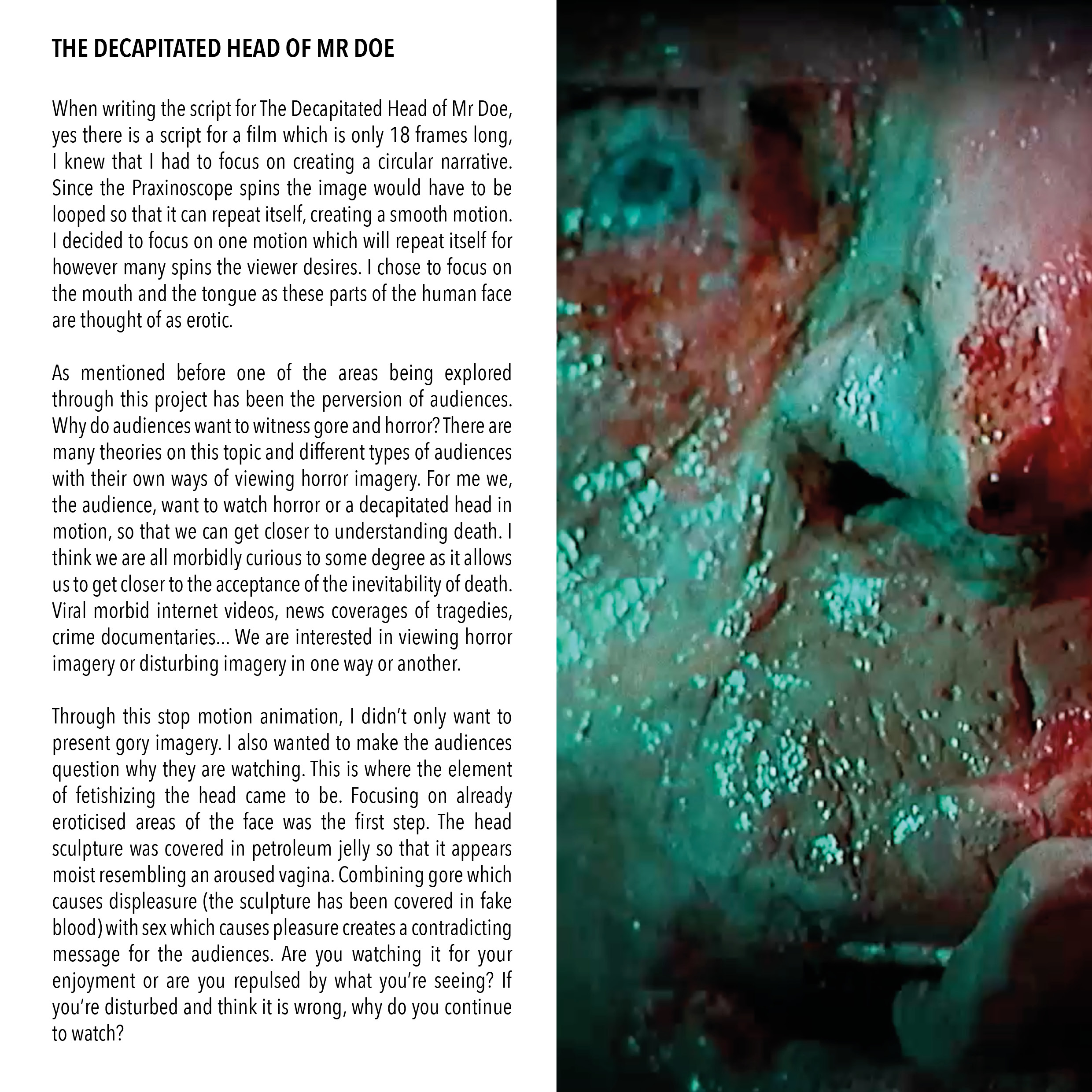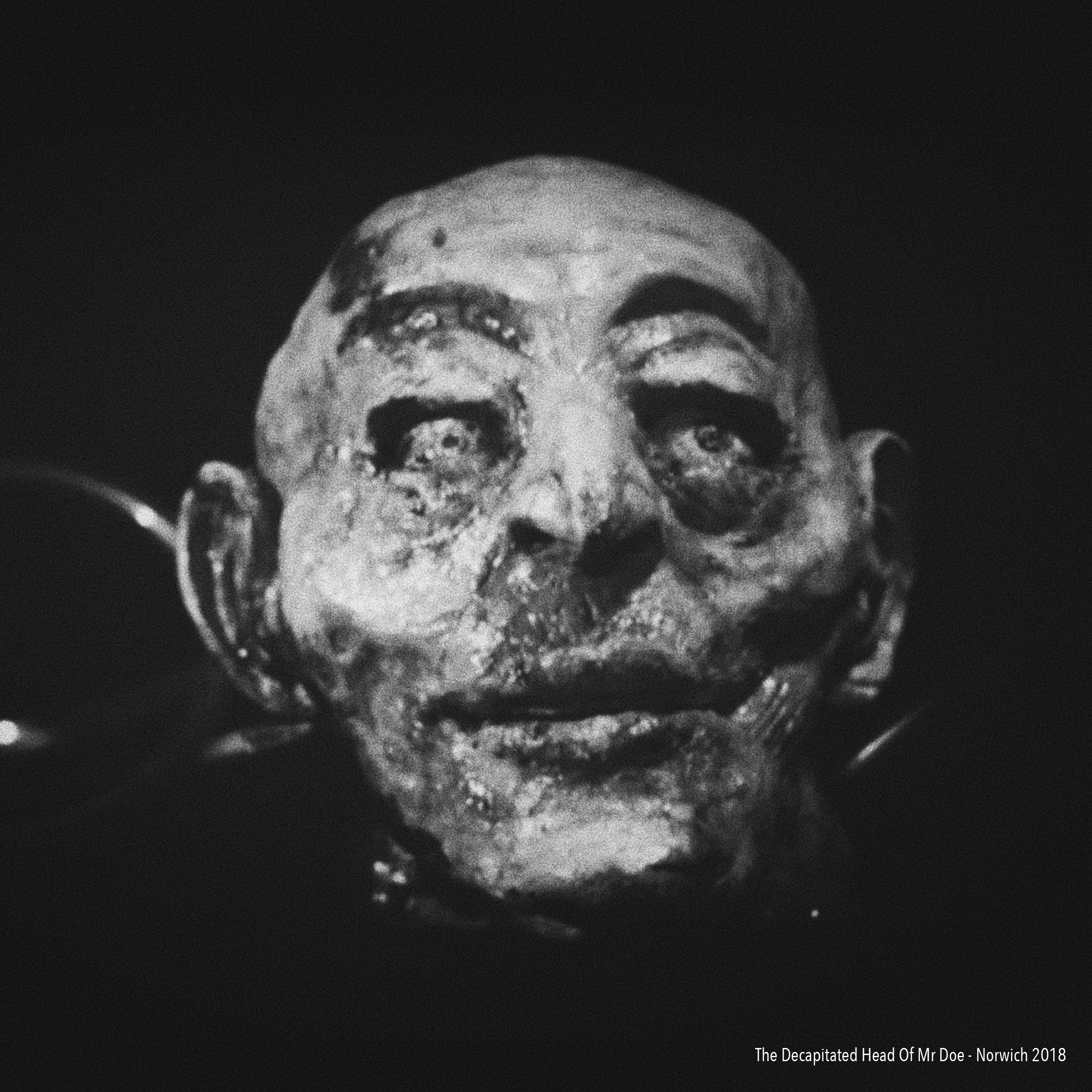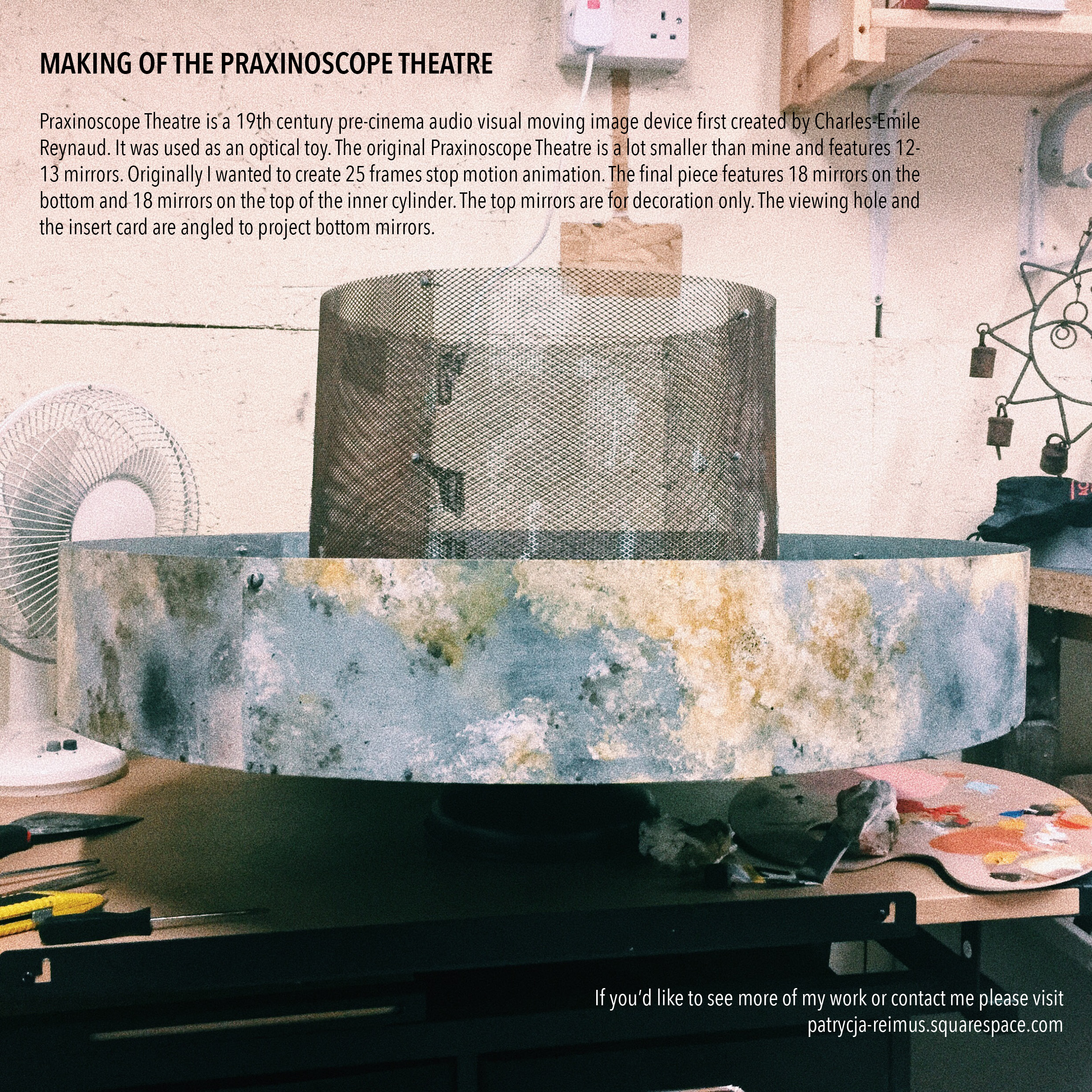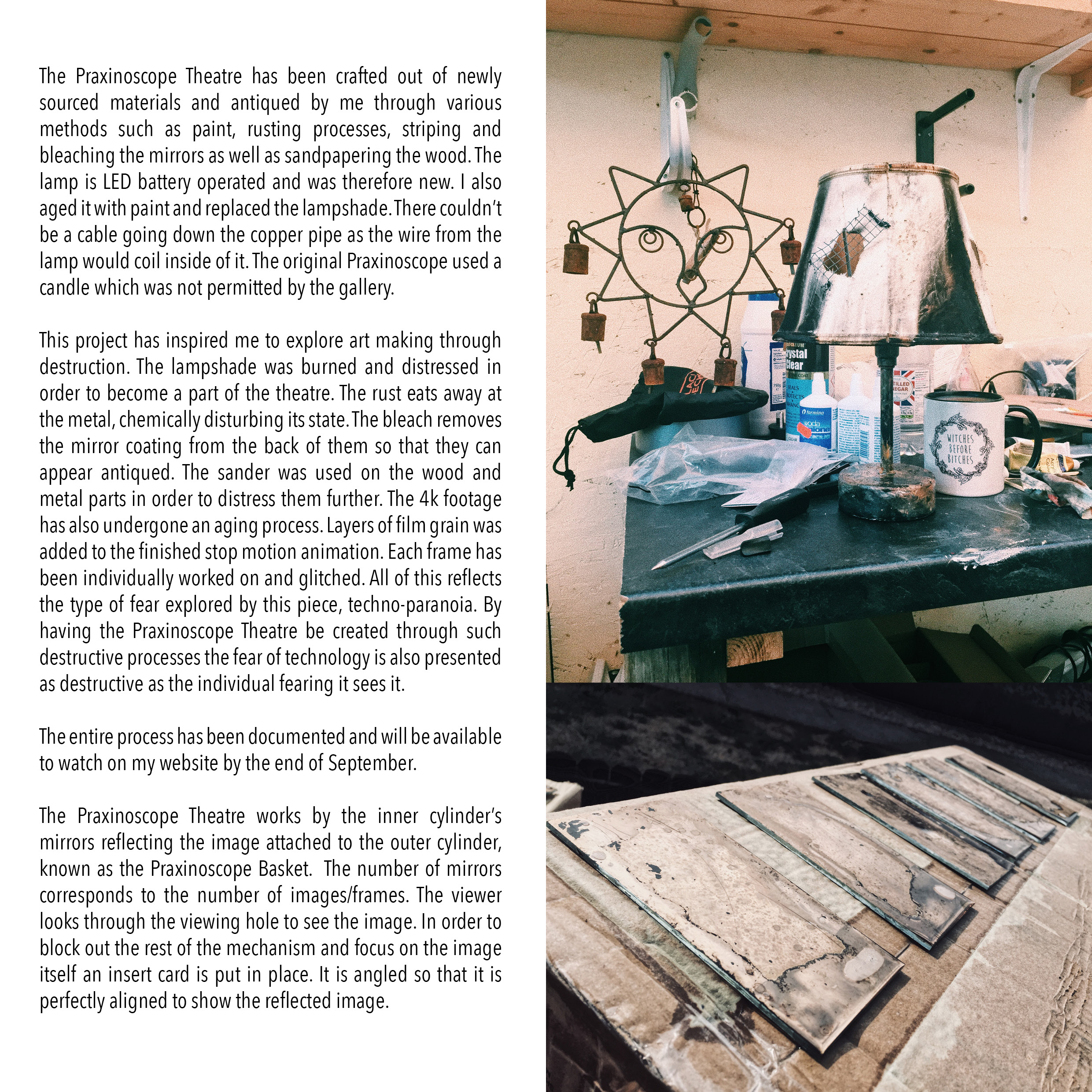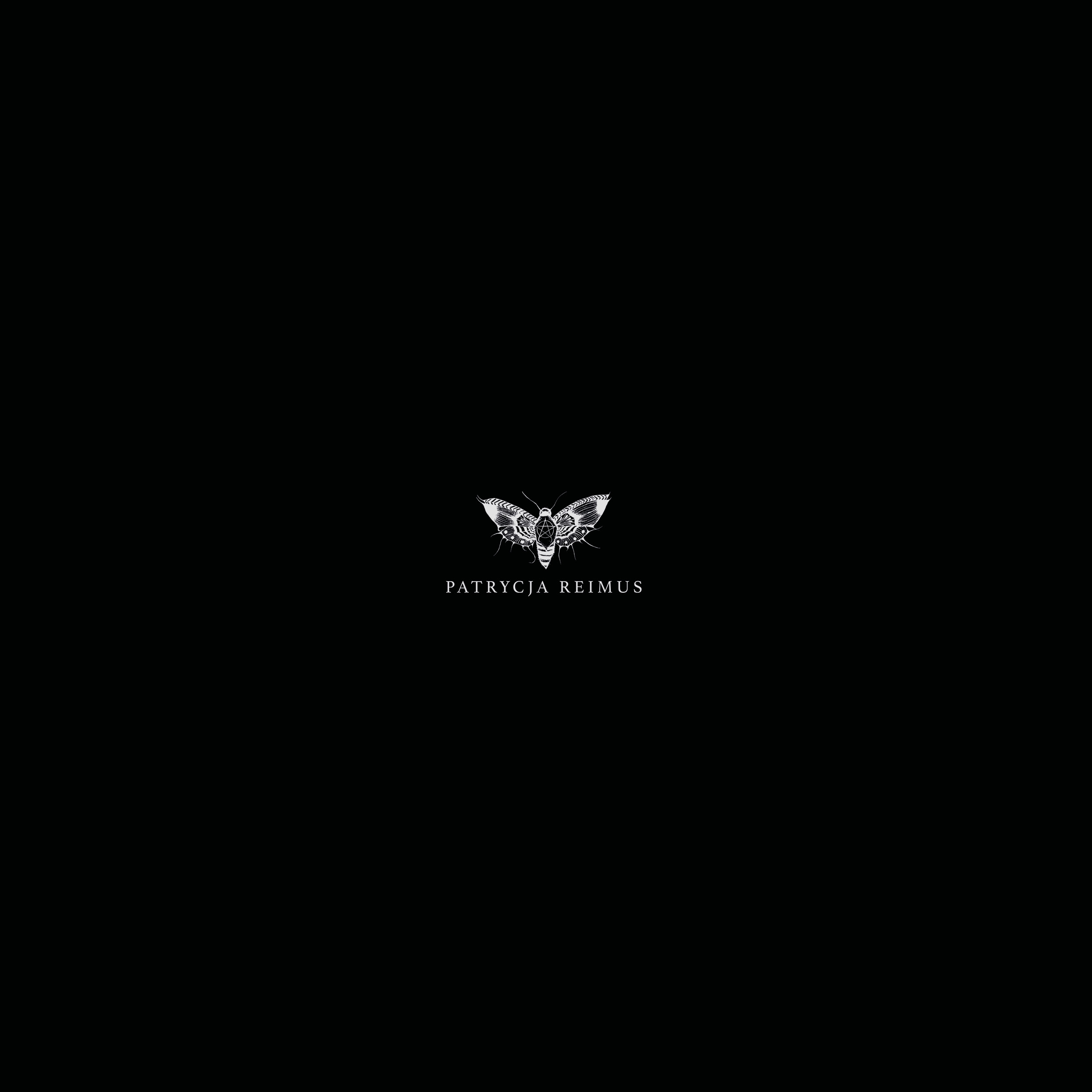PRAXINOSCOPE THEATRE OF HORRORS
This project is my reaction to the oversaturation of digital media. As a filmmaker, I’m tired of creating digital work which is only consumed by audiences via the digital medium. Through this project, I don’t want to demonize the digital media but to offer an alternative, a break from it.
In a way, my Praxinoscope Theatre is a take on techno-paranoia, a popular topic discussed by a variety of media formats which in turn echoes my continued research into how current societal fears can influence horror imagery. Continuing with this theme my work took on a cyber-punk feel. Regarding the choice of the moving image projected by the Praxinoscope, I decided on a fetishized decapitated head of an old man as I’m also interested in the perversion of audiences. Finally, I wanted my MA project to showcase all of the creative experimentation I have conducted throughout this year, including my newly developed interest in stop motion animation and sculpting.
Overview
Praxinoscope Theatre is a 19th-century pre-cinema audiovisual moving image device first created by Charles-Emile Reynaud. It was used as an optical toy. The original Praxinoscope Theatre is a lot smaller than mine and features 12-13 mirrors. Originally I wanted to create a 25 frames stop motion animation. The final piece features 18 mirrors on the bottom and 18 mirrors on the top of the inner cylinder – resulting in an 18 frames stop motion animation. The top mirrors are for decoration only. The viewing hole and the insert card are angled to project bottom mirrors and the image they reflect.
Side view
The Praxinoscope Theatre has been crafted out of newly sourced materials and antiqued by me through various methods such as paint, rusting processes, striping and bleaching the mirrors as well as sandpapering the wood. The lamp is LED battery operated and was therefore new. I also aged it with paint and replaced the lampshade. There couldn't be a cable going down the copper pipe as the wire from the lamp would coil inside of it. The original Praxinoscope used a candle which was not permitted by the gallery.
Viewing hole, insert card and chain detail
The Praxinoscope Theatre works via the inner cylinder's mirrors reflecting the image attached to the outer cylinder, known as the Praxinoscope Basket. The number of mirrors corresponds to the number of images/frames. The viewer looks through the viewing hole to see the image. In order to block out the rest of the mechanism and focus on the image itself, an insert card is put in place. It is angled so that it is perfectly aligned to show the reflected image.
Philosophy
This project has inspired me to explore art-making through destruction. The lampshade was burned and distressed to become part of the theatre. The rust ate away at the metal; chemically disturbing its' state. The bleach removed the mirrors' coating from the backs of them so that they appeared antiqued. The sander was used on the wood and metal parts to distress them further. The 4k footage has also undergone an ageing process. Layers of film grain were added to the finished stop motion animation; each frame individually worked on and glitched. All of this reflects the type of fear explored by this piece – techno-paranoia. By having the Praxinoscope Theatre created through such destructive processes, the fear of technology is also presented as destructive, reflecting what the individual fearing it sees it as.
stop-motion Animation
When writing the script for The Decapitated Head of Mr Doe – yes there is a script for a film which is only 18 frames long – I knew that I had to focus on creating a circular narrative. Since the Praxinoscope spins the image would have to be looped, so that it can repeat itself, creating a smooth motion. I decided to focus on one motion which will repeat itself for however many spins the viewer desires. I chose to focus on the mouth and the tongue, as these parts of the human face, are thought of as erotic.
As mentioned before, one of the areas being explored through this project was the perversion of audiences. Why do audiences want to witness gore and horror? There are many theories on this topic, and different types of audiences have different ways of viewing horror imagery. For me, we the audience, want to watch horror or a decapitated head in motion, so that we can get closer to understanding death. I think we are all morbidly curious to some degree as it allows us to get closer to the acceptance of the inevitability of death. Viral morbid internet videos, news coverages of tragedies, crime documentaries and more are evidence of this. We are interested in viewing horror imagery or disturbing imagery in one way or another.
Through this stop motion animation, I didn’t want to present gory imagery only. I also wanted to make the audiences question why they are watching it. This is where the element of fetishizing the head came in. Focusing on already eroticised areas of the face was the first step. The head sculpture was covered in petroleum jelly so that it appeared moist; resembling an aroused vagina. Combining gore which causes displeasure (the sculpture was covered in fake blood) with sex which causes pleasure creates a contradicting message for the audience. Are you watching it for your enjoyment, or are you repulsed by what you’re seeing? If you are disturbed and think it is wrong, why do you continue to watch?
Publication which was available to purchase at the NUA MA Show 2018.





